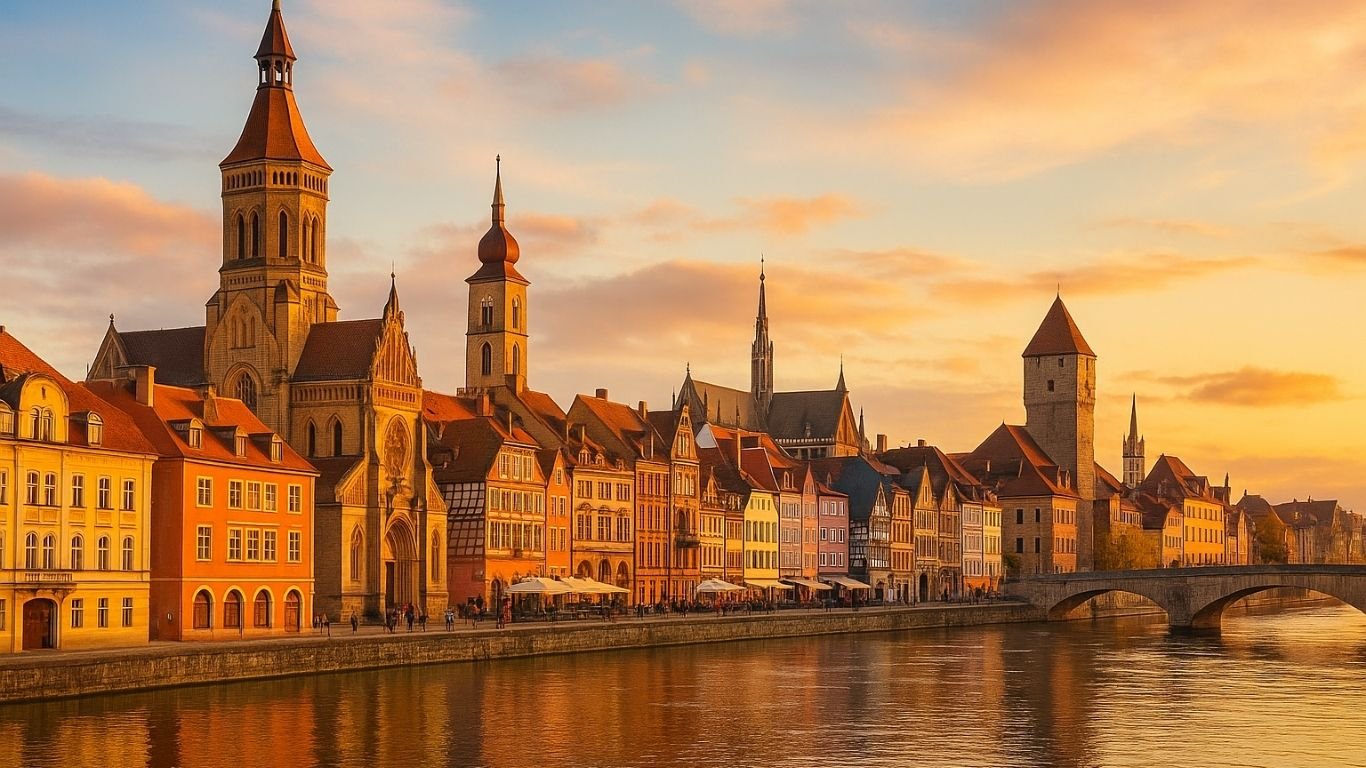Europe is no stranger to the spotlight. Cities like Paris, Rome, and Barcelona dominate travel itineraries and Instagram feeds, often at the expense of equally compelling destinations that remain blissfully under the radar. But for the discerning traveler seeking charm without chaos, value without compromise, and culture without crowds, there is a quieter path worth exploring. This journey isn’t about ticking boxes or chasing bucket-list icons. It’s about rediscovering Europe through its lesser-known treasures—the underrated European cities worth visiting that whisper rather than shout, yet leave a lasting impression.
From the pastel-toned facades of Colmar to the faded Ottoman echoes in Mostar, these cities defy cliché and redefine what a European getaway can look like. They offer architectural marvels, culinary excellence, and cultural depth—all without the tourist overload. Many are tucked away just hours from major hubs, easily reachable yet worlds apart in atmosphere. They promise slower travel, deeper connections, and the kind of authentic moments that glossy brochures rarely capture.
In this guide, we unveil 11 of Europe’s most underrated cities—places where cobblestone streets lead to uncrowded museums, where locals still outnumber tourists, and where you’re more likely to stumble into a folk festival than a souvenir shop. Whether you’re planning your next adventure or dreaming from your desk, these cities invite you to step off the beaten path and see Europe anew.
Let’s begin where the story is just as colorful as the city itself—Timișoara, Romania.
Table of Contents
1. Timișoara, Romania

Why Visit Timișoara?
Timișoara isn’t just one of the underrated European cities worth visiting—it’s a city that wears its past and future with equal flair. Located in western Romania near the borders of Hungary and Serbia, Timișoara is a multicultural mosaic of Baroque architecture, Austro-Hungarian heritage, and forward-thinking vibrancy. Known as the “Little Vienna,” the city has long stood at the crossroads of empires and revolution.
Its streets were the birthplace of the 1989 uprising that sparked the fall of communism in Romania, but today, they hum with student energy, street art, and café culture. In 2023, Timișoara held the title of European Capital of Culture, and it used the spotlight wisely—revamping public spaces, hosting avant-garde exhibitions, and affirming its place on the cultural map.
For travelers who crave authenticity over attraction queues, this is Romania at its most real and welcoming.
Timișoara – WikipediaTop Things to See and Do in Timișoara
- Union Square (Piața Unirii): Framed by vibrant facades and dominated by twin cathedrals, this is the postcard view of Timișoara. The pastel-colored buildings are especially stunning at golden hour.
- Metropolitan Cathedral: A striking piece of Romanian Orthodox architecture, with a richly painted interior and a peaceful park at its doorstep.
- Victory Square (Piața Victoriei): The symbolic heart of the 1989 revolution. Lined with art nouveau buildings, it’s also where you’ll find the Opera House and National Theatre.
- Bega Canal: Rent a bike or take a leisurely walk along this peaceful waterway, dotted with cafés and green spaces.
- Timișoara Art Museum & Communist Consumer Museum: For a look into both Romania’s creative pulse and its everyday past.
Where to Eat and Drink in Timișoara
- Craft Rooftop: Stylish views, inventive cocktails, and Romanian fusion cuisine make this a great spot to start your evening.
- Locanda del Corso: Mediterranean-Romanian flavors served in a romantic courtyard. Their truffle pasta is a standout.
- Scârț Loc Lejer: Equal parts bohemian bar and cultural curiosity. It’s quirky, cozy, and connected to the museum of Communist-era kitsch.
- The Charlatans Pub: A local-favorite for craft beers and a laid-back vibe, perfect for mingling with students and creatives.
Getting Around Timișoara
Timișoara is compact and walkable, with well-connected tram and bus networks for longer distances. A ticket costs around 2.50 RON (roughly €0.50). The Bega Canal trail is also ideal for cycling. Taxis are affordable, but apps like Bolt provide a more convenient experience with upfront pricing. The city is easily accessible via Timișoara International Airport, just a 20-minute ride from downtown.
2. Ghent, Belgium
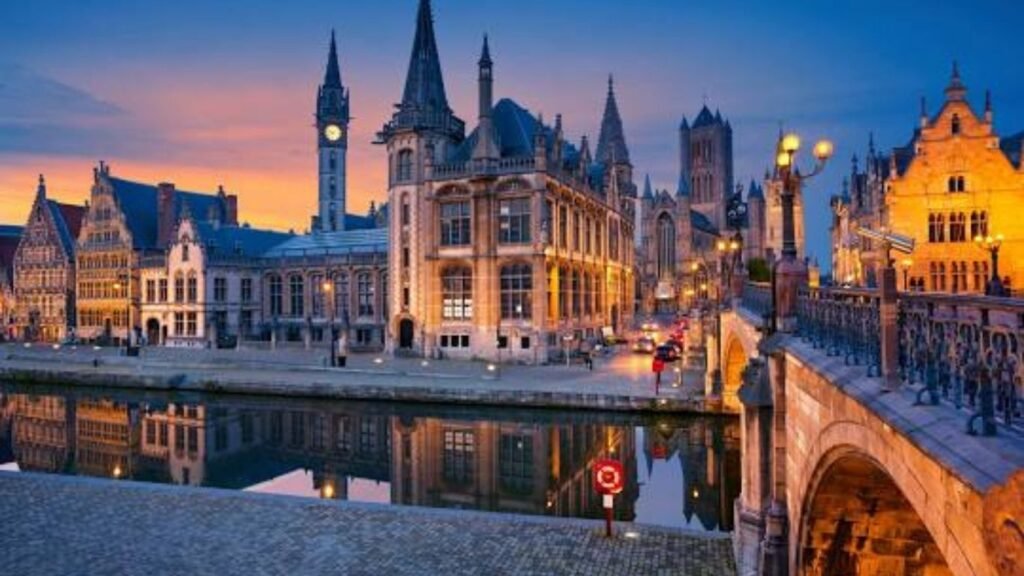
Why Visit Ghent?
Often overshadowed by the polished allure of Bruges and the cosmopolitan buzz of Brussels, Ghent remains one of the underrated European cities worth visiting—a medieval marvel hiding in plain sight. Located at the confluence of the Scheldt and Lys rivers, Ghent weaves centuries of Flemish history into a modern, progressive fabric that surprises and delights.
Despite its rich Gothic architecture and canal-laced charm, Ghent doesn’t feel like a museum piece. This is a living, breathing city with a large student population, a thriving plant-based culinary scene, and an innovative spirit that pulses through its festivals, public art, and civic spaces. It’s a place where you can sip a Trappist beer beside a 12th-century castle—or catch an underground music gig in a former abbey.
Ghent doesn’t demand attention. It earns it.
Top Things to See and Do in Ghent
- Gravensteen Castle: Towering above the city center, this medieval fortress offers panoramic views and a fascinating glimpse into Ghent’s gritty past.
- St. Bavo’s Cathedral: Home to the world-famous Adoration of the Mystic Lamb by the Van Eyck brothers, this cathedral is a pilgrimage site for art lovers.
- Patershol District: Cobblestone alleys, ivy-covered façades, and candlelit bistros make this old quarter a romantic retreat from the bustle.
- Design Museum Gent: A bold blend of historic and contemporary design exhibitions in a sleek, curated space.
- Street Art Tours: Ghent embraces its underground scene. Take a guided tour to uncover murals and graffiti that tell a parallel story of the city.
Where to Eat and Drink in Ghent
- De Superette: Run by a Michelin-starred chef, this cozy bakery-restaurant hybrid turns out fire-baked breads and rustic, locally sourced fare.
- Komkommertijd: A plant-based buffet that redefines vegan dining. Affordable, generous, and wildly flavorful.
- Het Waterhuis aan de Bierkant: One of Ghent’s oldest beer cafés with a riverside terrace and a menu of over 150 Belgian brews.
- Café Labath: A stylish stop for third-wave coffee, with a vibe that invites you to linger.
Getting Around Ghent
Forget cars—Ghent’s city center is a low-emission zone closed to most traffic, which makes exploring on foot or by bike a joy. The city’s tram and bus system, run by De Lijn, is reliable and inexpensive. Single ride tickets start at €2.50, or you can grab a 10-ride pass for better value. For canal views, hop aboard a boat tour, which runs regularly from spring to autumn.
3. Cádiz, Spain
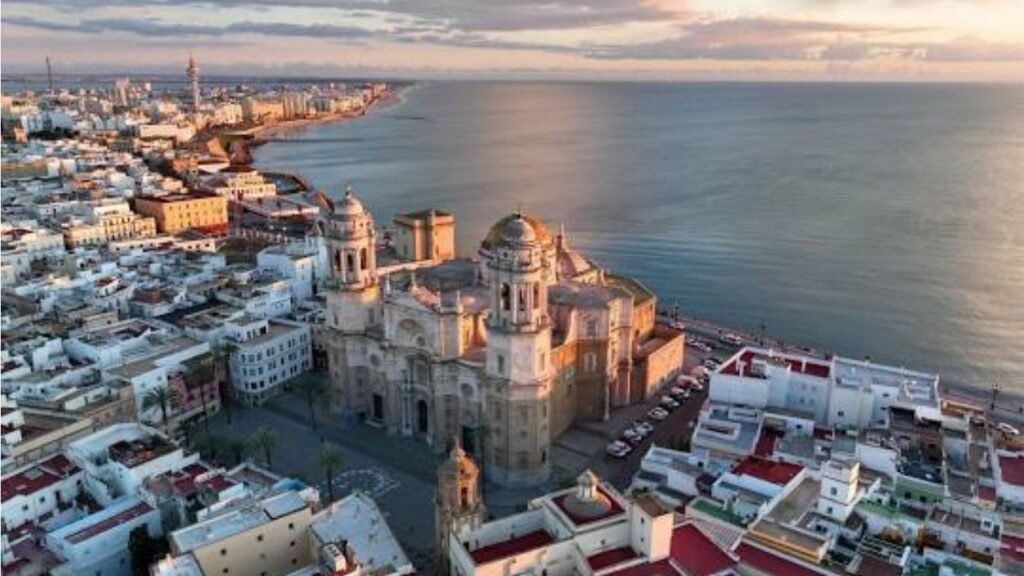
Why Visit Cádiz?
In a country where Barcelona and Madrid dominate the headlines, Cádiz quietly stands as one of the most underrated European cities worth visiting. Perched on a narrow peninsula in southwestern Spain, this ancient port city—often considered the oldest continuously inhabited city in Western Europe—blends maritime legacy, Moorish echoes, and laid-back Andalusian charm.
What Cádiz offers is an unpolished, authentic Spain. There’s no sheen of overt tourism here—just timeworn alleyways, fresh seafood markets, spontaneous flamenco, and golden beaches that locals still cherish as their own. The city’s layered history, dating back over 3,000 years, reveals itself slowly: in Phoenician ruins beneath museums, in baroque cathedrals fronting Atlantic winds, and in sunsets that spill across the promenade like molten gold.
Top Things to See and Do in Cádiz
- Cádiz Cathedral: The city’s most iconic structure, this 18th-century cathedral dazzles with its golden dome and panoramic tower views over the Atlantic.
- La Caleta Beach: Framed by ancient forts and kissed by gentle waves, this small beach is beloved by locals and perfect for a serene swim or sunset stroll.
- Mercado Central de Abastos: A buzzing central market that delivers a sensory explosion of seafood, local produce, and Andalusian specialties.
- Torre Tavira & the Camera Obscura: Climb the highest tower in the old town and experience a unique optical tour of the city below.
- Teatro Romano: Tucked away in the old quarter, these Roman ruins speak to Cádiz’s centuries of cultural layering.
Where to Eat and Drink in Cádiz
- El Faro de Cádiz: A historic institution offering elevated Andalusian cuisine. Their tortillitas de camarones (shrimp fritters) are the stuff of legend.
- Casa Manteca: No-frills, full flavor—this beloved tapas bar is all about jamón, manchego, and raucous local vibes.
- Balandro: Modern, elegant, and perfectly located near the waterfront. Expect creative plates and an extensive sherry list.
- Café Royalty: Step back into the Belle Époque with this ornate café that once hosted artists, poets, and intellectuals.
Getting Around Cádiz
Cádiz is delightfully walkable. The historical center is a maze of narrow streets best explored on foot, while local buses connect the beaches and outer districts. The Cádiz train station offers easy access to Seville and other Andalusian hubs. For beach-hopping or scenic rides along the coast, rent a bike or use a taxi, though most major sights sit within a comfortable walking radius.
4. Brno, Czech Republic
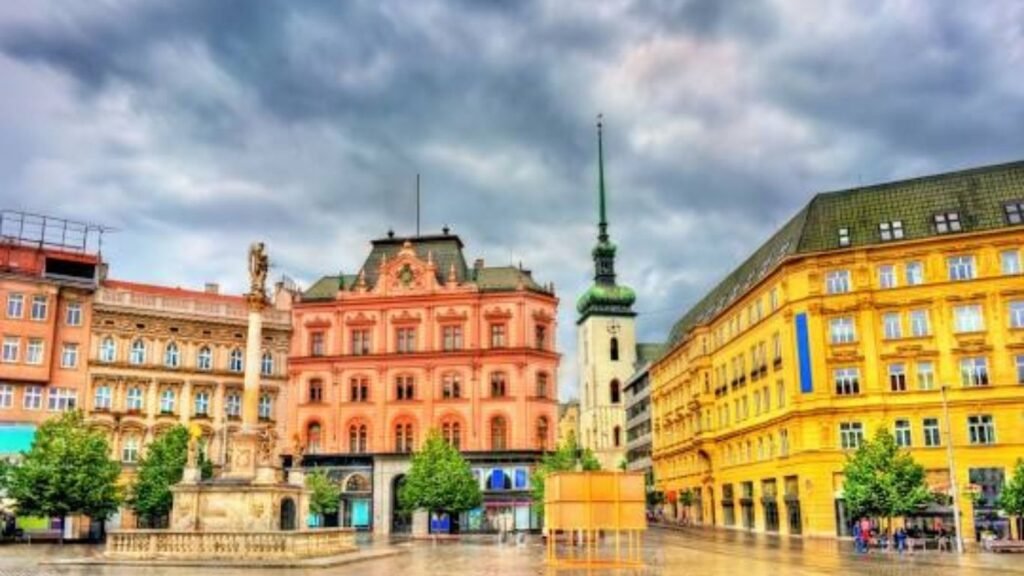
Why Visit Brno?
While Prague enchants with Gothic drama and crowds to match, Brno seduces with subtlety. As the second-largest city in the Czech Republic, Brno blends youthful dynamism with rich cultural heritage, yet rarely appears on the average tourist’s radar. This makes it one of the most quietly underrated European cities worth visiting, especially for those drawn to architectural elegance, inventive gastronomy, and a touch of Central European mystique.
Brno is a city where medieval cathedrals rise beside modernist masterpieces. It’s home to Gregor Mendel’s revolutionary genetics research and boasts a café culture that rivals Vienna’s. There’s a raw, unpretentious charm to Brno—an intellectual energy fueled by its universities and a creative pulse that flows through its galleries, underground bars, and street festivals. It may not aim to impress—but it effortlessly does.
Top Things to See and Do in Brno
- Špilberk Castle: A 13th-century fortress perched on a hilltop, offering panoramic views and a glimpse into Brno’s militaristic past.
- Villa Tugendhat: A UNESCO World Heritage Site and a marvel of modernist architecture designed by Ludwig Mies van der Rohe in the 1920s.
- Cathedral of St. Peter and Paul: Dominating the skyline with twin spires, this Gothic icon is beautifully lit at night and steeped in legend.
- Labyrinth Under the Vegetable Market: Explore a network of medieval tunnels and cellars beneath the city’s bustling marketplace.
- Moravian Karst: A natural wonder just outside the city, filled with dramatic caves and underground rivers.
Where to Eat and Drink in Brno
- Bar, který neexistuje (“The Bar That Doesn’t Exist”): A legendary cocktail bar with serious style and even more serious mixology.
- Soul Bistro: A sleek, light-filled space serving globally inspired dishes with seasonal Moravian ingredients.
- Lokál U Caipla: Authentic Czech food done right—try the svíčková with dumplings and a cold Pilsner.
- Kafec Brněnský: Brno’s brunch game is strong, and this café leads the pack with waffles, specialty coffee, and relaxed charm.
Getting Around Brno
Brno has one of the most efficient and user-friendly public transport systems in Europe. Trams and buses run frequently, with single tickets starting at CZK 25 (around €1). The city center is compact and walkable, with many key attractions clustered together. Visitors can also use the Brno City Card for unlimited transit and discounted entry to top sites. The local airport offers flights to several European cities, while train connections make it a perfect day trip from Vienna or Prague.
5. Mostar, Bosnia and Herzegovina
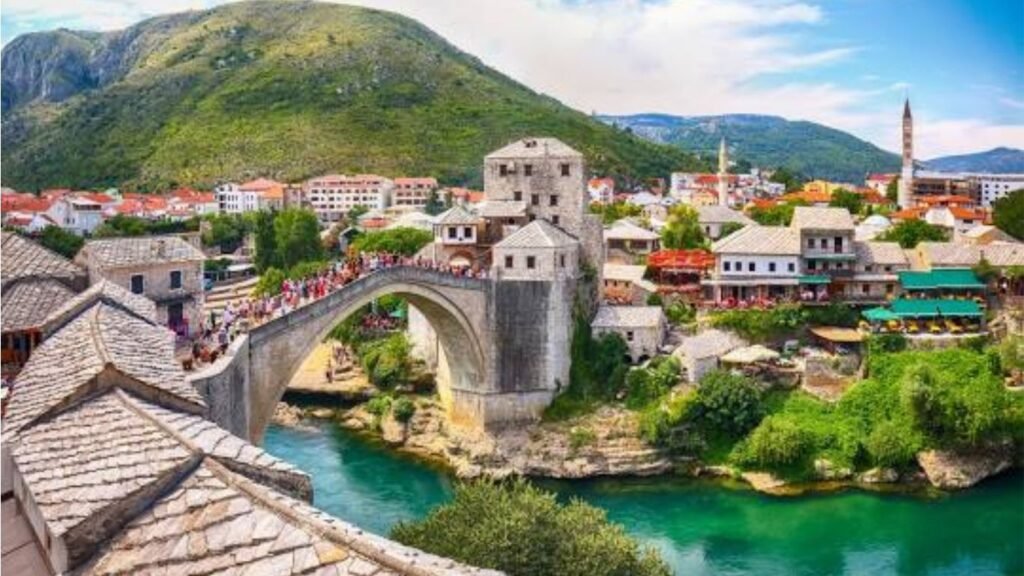
Why Visit Mostar?
Few places in Europe stir the soul quite like Mostar. Nestled in the Herzegovina region, this city straddles the emerald Neretva River and blends East and West in a way that feels both ancient and immediate. With its iconic stone bridge, Ottoman-era architecture, and resilient spirit, Mostar has quietly become one of the most evocative underrated European cities worth visiting.
Mostar’s beauty is haunting. Its cobblestone alleys and minarets tell tales of conquest, culture, and conflict—yet the city has emerged from war not only rebuilt but revived. Today, it offers travelers a striking contrast of worlds: mosques beside cathedrals, Turkish coffee next to rakija shots, and souvenirs sold alongside artisanal copperwork passed down through generations. In every glance, the city tells a story of endurance.
Top Things to See and Do in Mostar
- Stari Most (Old Bridge): Originally built in the 16th century and meticulously reconstructed after the Bosnian War, this UNESCO-listed bridge is Mostar’s beating heart—and a symbol of resilience. Watch local divers plunge into the river below for a thrill steeped in tradition.
- Koski Mehmed Pasha Mosque: Climb the slender minaret for panoramic views that stretch across the red rooftops and riverbend.
- Old Bazaar (Bazar Kujundžiluk): A lively stretch of shops selling handmade goods, carpets, spices, and war-era memorabilia.
- Museum of War and Genocide Victims: Sobering but essential, this museum provides context to Bosnia’s recent past.
- Neretva Riverfront: Ideal for a relaxed walk or an impromptu picnic with views of the bridge and surrounding cliffs.
Where to Eat and Drink in Mostar
- Šadrvan: Set beside the Old Bridge, this traditional Bosnian restaurant serves up hearty portions of ćevapi, dolma, and japrak in an Ottoman-style courtyard.
- Hindin Han: Overlooking the river, this rustic spot combines generous servings with scenic ambiance. Their grilled trout is a local favorite.
- Café de Alma: A refined corner café offering both Bosnian and European coffee styles, plus a delicious array of sweet pastries.
- Sky Lounge Mostar: For panoramic city views and cocktails as the sun dips behind the mountains.
Getting Around Mostar
Mostar is compact, and its old town is best explored on foot. Public transportation is limited, but local taxis are affordable and efficient for traveling to nearby neighborhoods. Trains and buses connect Mostar to Sarajevo, Dubrovnik, and Split. For the full experience, many visitors choose to rent a car to explore nearby gems like Blagaj, Počitelj, and the Kravice Waterfalls—all under an hour away.
6. Gjirokastër, Albania
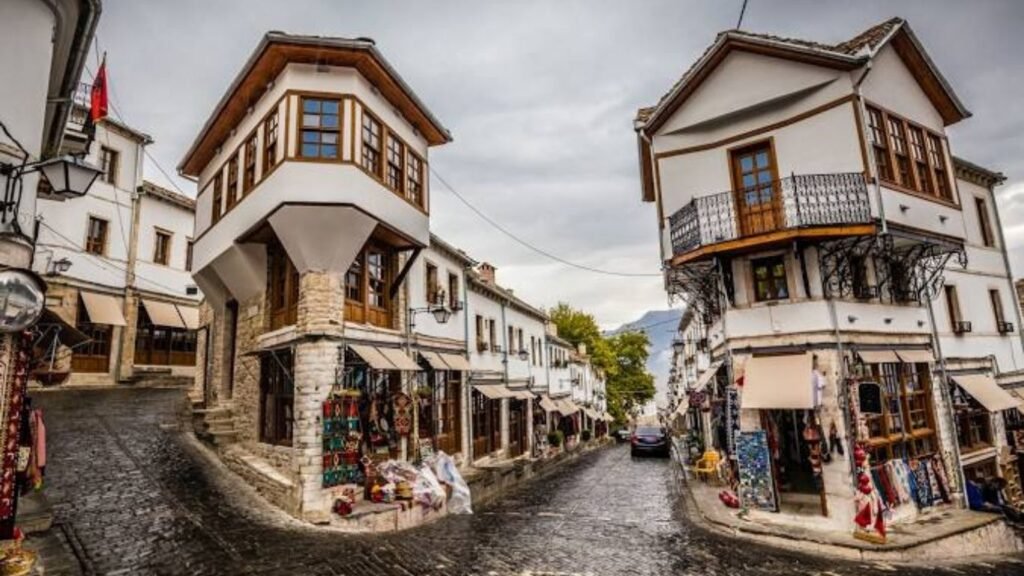
Why Visit Gjirokastër?
Often overlooked in favor of Albania’s beach-laced Riviera, Gjirokastër is a city carved from stone—literally. Set against the dramatic backdrop of the Gjerë Mountains, this UNESCO World Heritage Site is a living museum of Ottoman architecture, fortress history, and Balkan soul. For travelers seeking authenticity and atmosphere, Gjirokastër stands tall among the most underrated European cities worth visiting.
Nicknamed “The City of Stone,” Gjirokastër’s cobbled streets twist past slate-roofed homes, fortified towers, and secluded courtyards that echo with stories. It’s the birthplace of both communist dictator Enver Hoxha and Nobel-nominated author Ismail Kadare, two figures who left complex legacies but undeniably shaped Albania’s modern narrative. What sets Gjirokastër apart is not just its preserved heritage—but its palpable sense of pride, resilience, and warmth.
Top Things to See and Do in Gjirokastër
- Gjirokastër Castle: One of the largest castles in the Balkans, with panoramic views, a weapons museum, and even a downed U.S. fighter jet on display—left over from Cold War tensions.
- Old Bazaar (Pazari i Vjetër): The beating heart of the city. Browse handwoven rugs, antique silverwork, and traditional crafts amid Ottoman-era storefronts.
- Zekate House: A beautifully preserved example of Ottoman residential architecture, complete with frescoes and mountain views.
- Ethnographic Museum: Located in Hoxha’s childhood home, this museum offers insights into traditional Albanian life.
- Ali Pasha Bridge: A short hike outside the city leads to this aqueduct relic, hidden in a lush, quiet gorge.
Where to Eat and Drink in Gjirokastër
- Taverna Tradicionale Kardhashi: Known for serving slow-cooked qifqi (herbed rice balls), baked lamb, and byrek made just like Albanian grandmothers would.
- Kujtimi Restaurant: No-frills, just flawless homemade cuisine. Their stuffed peppers and grilled meats are local favorites.
- Kafe Bar Muzeu: A charming hillside café ideal for sipping raki or espresso while watching the sun slip behind the castle walls.
- Hotel Kalemi Terrace Bar: Come for the panoramic views, stay for the quiet elegance of this hidden terrace.
Getting Around Gjirokastër
Gjirokastër’s old town is best explored on foot, though its steep, winding streets call for sturdy shoes. Taxis and local buses connect the town to surrounding villages and tourist sights. To reach Gjirokastër, travelers typically drive or take a furgon (minibus) from Tirana, Sarandë, or Berat. The nearest major hub is Sarandë—just under two hours away—making Gjirokastër a perfect inland escape from Albania’s coastal crowds.
7. Kaunas, Lithuania
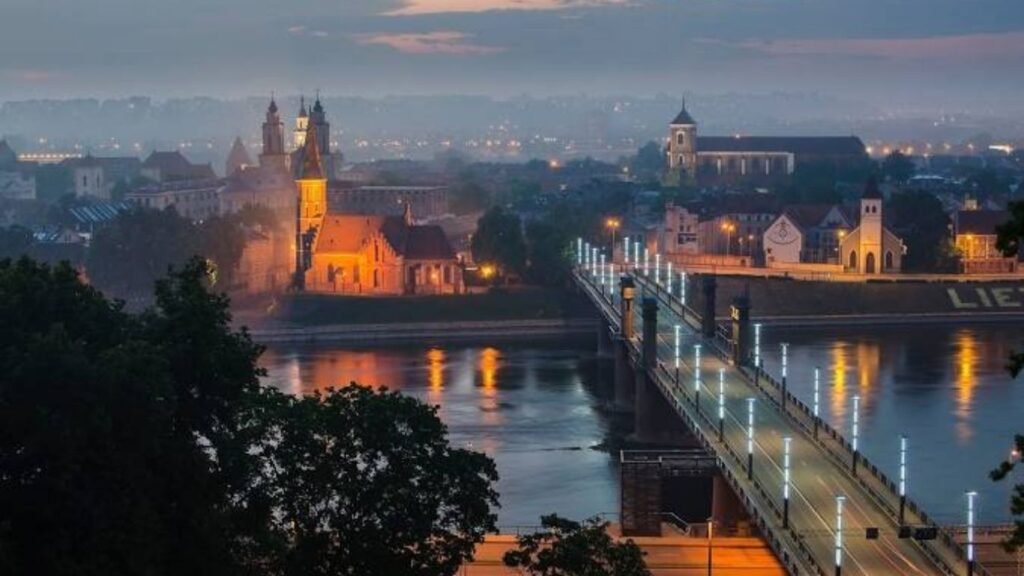
Why Visit Kaunas?
In the shadows of Vilnius, Lithuania’s charismatic second city, Kaunas has long flown under the radar. But that’s exactly what makes it one of the most compelling underrated European cities worth visiting. With its striking interwar architecture, thriving street art scene, and creative undercurrent, Kaunas feels like a city confidently coming into its own.
Kaunas served as Lithuania’s temporary capital during the interwar years, a period that gave rise to its unique modernist cityscape—now a candidate for UNESCO World Heritage status. Fast-forward to today, and the city exudes youthful energy, with galleries, cafés, and festivals breathing new life into historic streets. As a European Capital of Culture in 2022, Kaunas proved it’s no longer just a stopover—but a destination in its own right.
Top Things to See and Do in Kaunas
- Old Town & Town Hall Square: A charming ensemble of pastel buildings, cobbled alleys, and Gothic churches that hums with life, especially in summer.
- Laisvės Alėja (Liberty Avenue): A tree-lined pedestrian boulevard stretching nearly 2km, packed with shops, cafés, and people-watching potential.
- Ninth Fort Museum: A sobering but vital look into Lithuania’s 20th-century history, particularly during WWII and Soviet occupation.
- Pažaislis Monastery: Baroque architecture meets serene pine forest—one of the most photogenic spiritual sites in the Baltics.
- Street Art: From the famous “Wise Old Man” mural to hidden works in back alleys, Kaunas doubles as an open-air gallery.
Where to Eat and Drink in Kaunas
- Višta Puode: Traditional Lithuanian comfort food reimagined with finesse. Try the potato dumplings (cepelinai) or pork belly with seasonal sides.
- Spurginė: A retro donut bar serving melt-in-your-mouth pastries since Soviet times—an affordable and nostalgic bite of local culture.
- Monte Pacis: Located at the Pažaislis Monastery, this fine-dining restaurant brings local ingredients into a sacred, elegant setting.
- Hop Doc Gastropub: A top spot for Lithuanian craft beers, gourmet burgers, and modern Baltic cuisine.
Getting Around Kaunas
Kaunas is easy to navigate. The compact city center is pedestrian-friendly, and the trolleybus and bus system is affordable and efficient. A single ride costs around €1, or you can use the Kaunas City Card for unlimited travel and museum discounts. The airport, just 15 minutes from the city, offers budget flights across Europe, and Vilnius is only a 90-minute train ride away—making Kaunas an excellent base or side trip.
8. Trieste, Italy
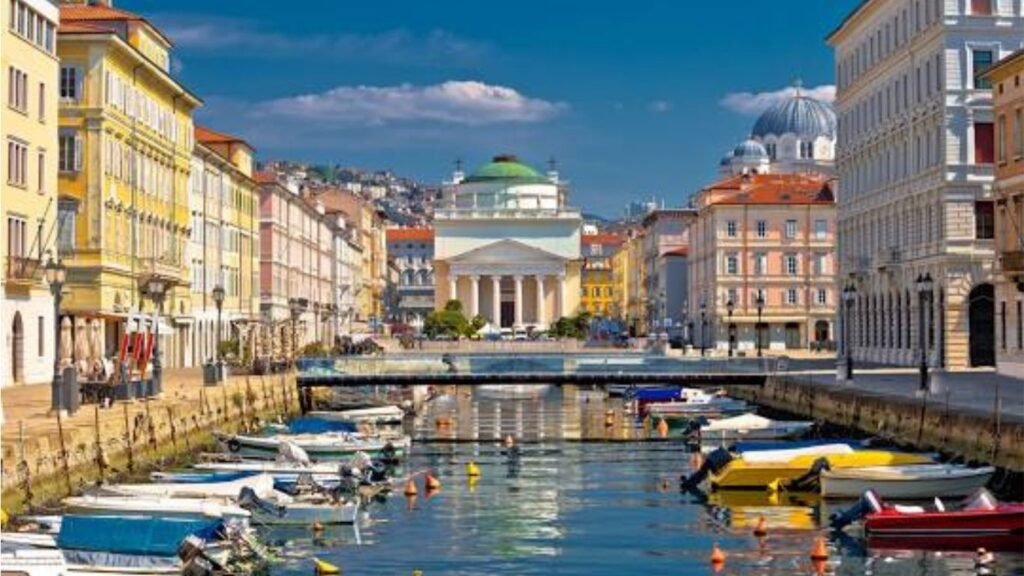
Why Visit Trieste?
Italy is a tapestry of world-renowned cities, but few know the name Trieste, let alone its captivating history and coastal charm. Tucked against the Slovenian border and kissed by the Adriatic Sea, Trieste is one of those rare underrated European cities worth visiting that effortlessly blends Italian, Austrian, and Slavic influences into something uniquely its own.
Trieste once served as the Austro-Hungarian Empire’s principal seaport, and its grandeur still echoes in its Neoclassical palazzi and grand boulevards. Yet despite its imperial past, the city retains a laid-back, almost melancholic allure. This is a place where intellectuals like James Joyce wrote their masterpieces, where coffee isn’t just a drink—it’s an institution—and where the sea is never more than a few minutes away. Quietly sophisticated and historically rich, Trieste feels like a whispered secret.
Top Things to See and Do in Trieste
- Piazza Unità d’Italia: One of Europe’s largest seafront squares, flanked by elegant buildings and offering open views of the Adriatic.
- Castello di Miramare: A fairytale castle perched above the sea, surrounded by lush gardens and filled with Habsburg-era opulence.
- Caffè San Marco: A literary café that has served as a creative sanctuary for writers and intellectuals since 1914.
- Grotta Gigante: One of the largest accessible caves in the world, just outside the city—a natural marvel worth exploring.
- Canal Grande: A serene waterway lined with cafés and boats, perfect for an evening passeggiata or sunset espresso.
Where to Eat and Drink in Trieste
- Trattoria Nerodiseppia: A cozy spot near the marina known for impeccable seafood and pasta with squid ink (the dish that inspired the name).
- Antico Caffè Torinese: Historic, ornate, and rich with ambiance. Ideal for a classic Italian aperitivo.
- Osteria Ai Maestri: Unassuming from the outside but celebrated for its fresh, seasonal ingredients and Triestine traditions.
- Caffè degli Specchi: Located on the main square, this café has seen centuries pass and remains the perfect place to watch Trieste’s elegance unfold.
Getting Around Trieste
Trieste’s compact center is best explored on foot, especially since its beauty lies in quiet corners and waterfront strolls. Public buses are efficient for reaching neighborhoods or the surrounding Karst Plateau. The city’s vintage tram, the Opicina Tramway, offers a unique ride with scenic hilltop views. Trieste Airport connects to major European hubs, and regular trains run to Venice, Ljubljana, and beyond, making it a fantastic cultural crossroads for extended itineraries.
9. Pécs, Hungary
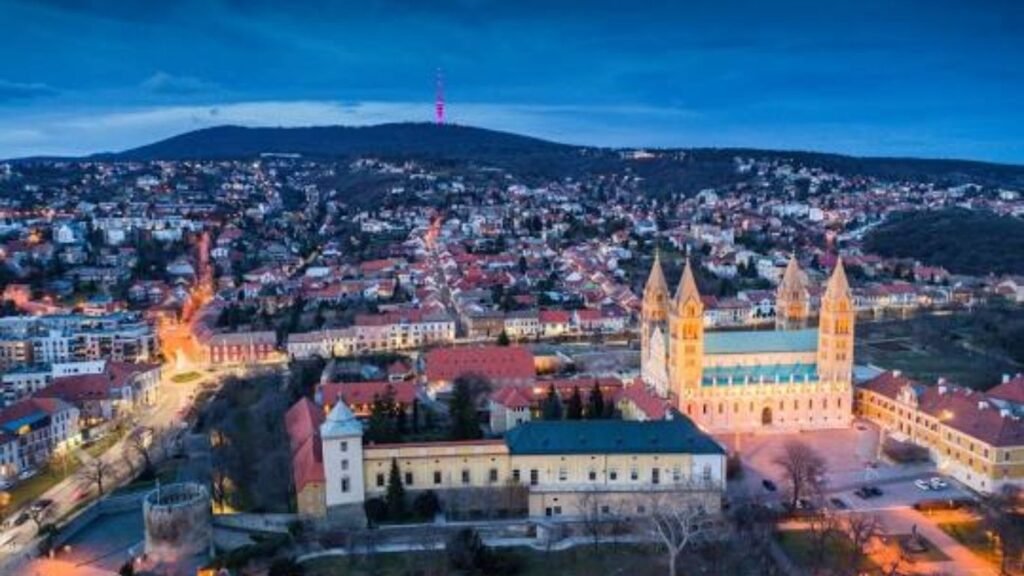
Why Visit Pécs?
Hungary’s capital might steal the spotlight, but it’s the country’s fifth-largest city—Pécs—that quietly impresses those who venture south. With its Roman ruins, Ottoman mosques, and sun-soaked vineyards, Pécs is one of those rare underrated European cities worth visiting that balances multicultural heritage with Mediterranean flair.
Founded over 2,000 years ago and shaped by Roman, Christian, and Islamic influences, Pécs is a living timeline wrapped in art and sunshine. It was named a European Capital of Culture in 2010, and it’s easy to see why: the city is studded with galleries, university life buzzes through its streets, and locals take their coffee—and wine—very seriously. Pécs offers all the elegance of a European cultural hub, minus the crowds.
Top Things to See and Do in Pécs
- Pécs Cathedral (Basilica of St. Peter and St. Paul): A four-towered marvel with an underground crypt and sweeping city views from the bell tower.
- Zsolnay Cultural Quarter: A former ceramics factory turned into a sprawling cultural district with museums, theaters, and art studios.
- Mosque of Pasha Qasim: A 16th-century Ottoman mosque that now serves as a Catholic church—where East meets West under one dome.
- Early Christian Necropolis: A UNESCO World Heritage Site with beautifully preserved tombs and mosaics from the 4th century.
- Kiraly Street: The city’s pedestrian boulevard brimming with cafés, bookstores, and stylish boutiques.
Where to Eat and Drink in Pécs
- Blöff Bisztró: Modern Hungarian cuisine with seasonal flair, plus a wine list celebrating local Villány reds.
- Bagolyvár Restaurant: Located near the Zsolnay Quarter, this charming place serves rustic Hungarian classics in a historic setting.
- Replay Café & Restaurant: A stylish urban spot perfect for brunch or an afternoon coffee with a slice of dobos torte.
- Szabadkikötő: A local favorite for wine, music, and art—the perfect place to feel the pulse of Pécs’ creative scene.
Getting Around Pécs
Pécs is delightfully walkable, especially in its compact city center. Buses cover more distant areas, with single rides starting at around 350 HUF (about €0.90). The city is well connected by train and bus to Budapest (a 2.5–3 hour ride), and also lies close to the wine region of Villány—perfect for day trips into Hungary’s sun-drenched vineyards.
10. Lviv, Ukraine
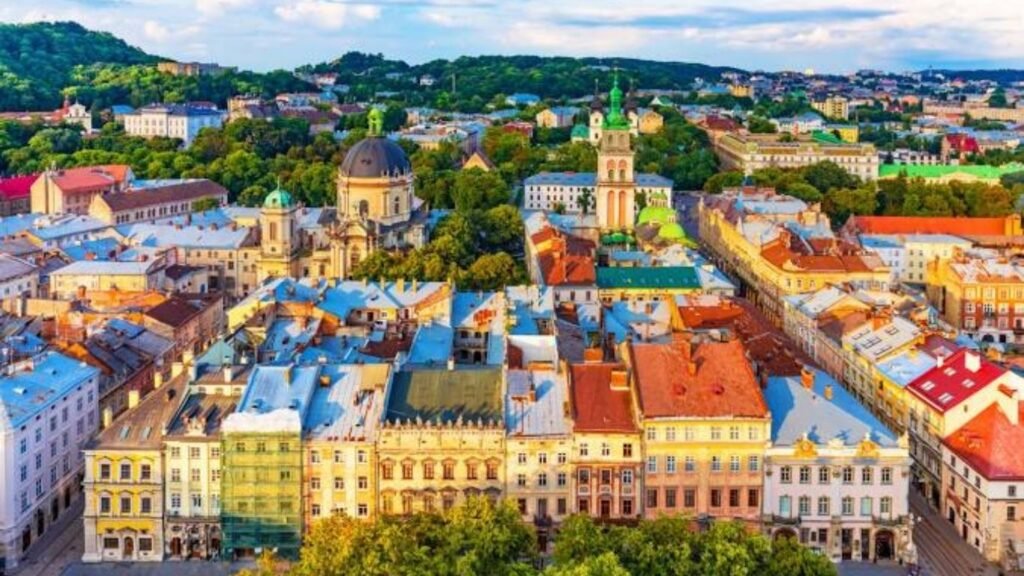
Why Visit Lviv?
Lviv feels like a European dream preserved in amber. With its Austro-Hungarian façades, cobbled alleys, baroque churches, and a coffeehouse culture to rival Vienna’s, Lviv stands as one of the most soulful underrated European cities worth visiting. Located in western Ukraine, near the Polish border, it’s a place where cultures converge and history lingers in every stone.
Despite the challenges Ukraine faces, Lviv remains a safe, thriving cultural capital. It’s where you’ll find jazz echoing through courtyards, secret cafés hidden behind bookshelves, and some of the most atmospheric Christmas markets in Europe. The city’s resilience, creativity, and sense of identity make it not just a destination, but an experience—one rich with emotion, pride, and beauty.
Top Things to See and Do in Lviv
- Market Square (Rynok Square): The heart of Lviv’s Old Town, surrounded by colorful 16th-century buildings, quirky museums, and al fresco cafés.
- Lviv Opera House: A jaw-dropping architectural gem offering world-class performances at a fraction of Western European prices.
- High Castle Hill: Climb to the top for panoramic views over Lviv’s rooftops and distant Carpathian horizons.
- Lychakiv Cemetery: One of Europe’s most beautiful and historic resting places, with elaborate tombs and war memorials.
- House of Legends: A whimsical multi-story restaurant where every room tells a different story—and the rooftop offers city views and a fire-breathing chimney sweep.
Where to Eat and Drink in Lviv
- Baczewski Restaurant: A refined spot offering a gourmet twist on Galician and Polish-Ukrainian cuisine, complete with classical music and vintage flair.
- The First Lviv Grill of Meat and Justice: Part restaurant, part performance art. Themed around medieval punishment, but the grilled meats are serious business.
- Lviv Coffee Mining Manufacture: An immersive café-museum where coffee is “mined” underground and flambéed tableside.
- Pravda Beer Theatre: A vibrant, edgy brewpub where live music meets craft beer innovation in a cathedral-sized venue.
Getting Around Lviv
Lviv’s city center is compact and ideal for walking. For longer distances, the city’s vintage trams and buses are easy to navigate, with tickets costing around 10 UAH (about €0.25). Taxis are affordable, but rideshare apps like Bolt provide more reliability. Lviv Danylo Halytskyi International Airport connects the city to much of Europe, and direct trains link it to Kyiv, Warsaw, and Budapest.
11. Colmar, France
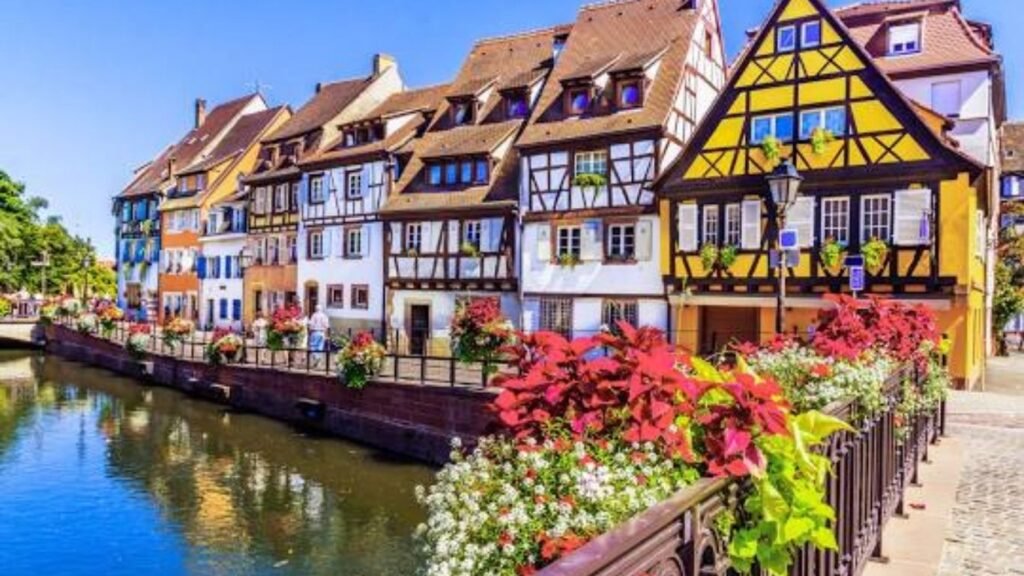
Why Visit Colmar?
Nestled in France’s Alsace region near the German border, Colmar looks like it stepped out of a storybook—and somehow, it still manages to feel like a secret. Though its timber-framed houses and canal-laced quarters attract those in the know, it remains one of the most visually enchanting yet underrated European cities worth visiting.
Colmar is a showcase of preserved medieval and Renaissance architecture, wrapped in floral splendor during warmer months and twinkling with festive lights in winter. Its mix of French charm and Germanic precision makes every detail a delight—from its half-timbered facades and painted shutters to the scent of tarte flambée wafting through cobbled squares. Whether you’re sipping wine under a vine-covered pergola or strolling through art-filled museums, Colmar whispers elegance with every step.
Top Things to See and Do in Colmar
- Petite Venise (Little Venice): A postcard-perfect district with pastel houses mirrored in serene canals—ideal for romantic walks or gondola-style boat rides.
- Unterlinden Museum: Housed in a former convent, this museum features the celebrated Isenheim Altarpiece and works spanning centuries of European art.
- Old Town Walking Tour: Take your time weaving through Rue des Marchands and admire centuries-old houses with whimsical woodwork and colorful facades.
- St. Martin’s Church: A Gothic cathedral with warm Vosges sandstone that glows gold at sunset.
- Alsatian Wine Route Excursions: Colmar is the beating heart of Alsace’s wine country, with world-class Riesling and Gewürztraminer vineyards just minutes away.
Where to Eat and Drink in Colmar
- L’Atelier du Peintre: A Michelin-starred experience that delivers modern French cuisine in an artfully refined setting.
- La Table du Brocanteur: Cozy, eclectic, and filled with antiques, this bistro offers hearty Alsatian classics like choucroute garnie and baeckeoffe.
- Wistub Brenner: Authentic Alsatian warmth and generous local dishes, all served in a timbered dining room with rustic charm.
- Marché Couvert (Covered Market): Sample regional cheeses, pastries, and local wines in this vibrant and historic market hall.
Getting Around Colmar
Colmar is compact and easily walkable. Bicycles are popular for venturing into surrounding vineyards, and guided electric tuk-tuk tours offer a fun way to explore the city center. Local buses connect Colmar with nearby villages and wine towns, while the train station offers fast links to Strasbourg, Mulhouse, and even Basel. If you’re planning a regional itinerary, Colmar makes for a perfect base to explore the Alsace Wine Route.
Conclusion
In a continent where tourism often follows a well-worn script, the true magic lies offstage. The underrated European cities worth visiting aren’t just alternatives to the big-name destinations—they’re places of quiet wonder, rich identity, and unexpected beauty. From the stone-carved lanes of Gjirokastër to the castle-crowned skyline of Brno, each city in this guide offers something far more lasting than a snapshot: a genuine connection to place.
These cities invite you to travel deeper, not just farther. They give you space to breathe, time to linger, and moments to discover Europe in its raw, unfiltered form. Whether you’re after art and architecture, food and wine, history or serenity, there’s a hidden gem waiting for you—one that hasn’t yet been overrun by the rhythms of mass tourism.
So next time you’re planning your itinerary, skip the queues, dodge the clichés, and embrace the lesser-known. These 11 cities may not be famous, but once visited, they are never forgotten.
FAQ
What makes a city “underrated” in Europe?
An underrated European city is typically one that receives fewer tourists despite offering rich cultural, historical, and natural attractions. These destinations often provide a more authentic, affordable, and less crowded experience.
Are these cities safe for travelers?
Yes, all the cities listed here are generally considered safe for visitors. Like anywhere, standard precautions apply—stay aware of your surroundings, especially at night, and keep your belongings secure.
How can I get to these cities if they’re not major hubs?
Most of these cities are accessible by regional airports, trains, or buses from larger European hubs. Renting a car is also a flexible option for more remote destinations like Gjirokastër or Pécs.
Is it easy to find English speakers in these lesser-known cities?
In many of these cities—especially those with universities or established tourism infrastructure—you’ll find English speakers in hotels, restaurants, and tourist areas. Learning a few local phrases is always appreciated.
What’s the best time to visit underrated European cities?
Spring and autumn offer ideal weather and thinner crowds. However, each city shines in its own way throughout the year—Colmar during its Christmas markets, or Cádiz under the Andalusian summer sun.
